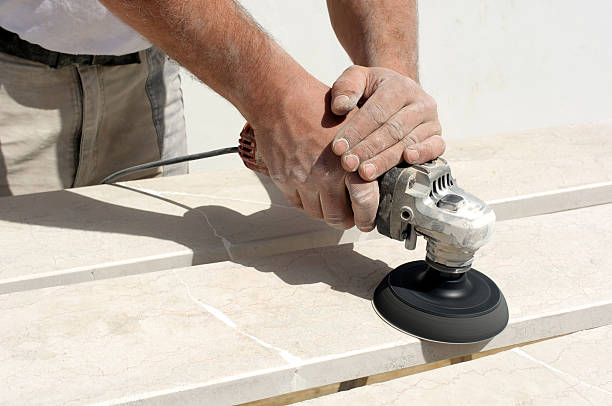Marble floors exude opulence and timelessness, but their luxurious appearance can be marred by a variety of issues over time. From subtle surface scratches to more severe cracks and stains, understanding the common problems that plague marble floors is essential for effective restoration. In this comprehensive guide, we demystify the common issues associated with marble floors and provide authoritative solutions to bring back their original splendor.
Scratches: The Bane of Marble Elegance
One of the most prevalent issues faced by marble floors is surface scratches. These can occur due to the abrasive action of dirt, sand, or even improperly maintained cleaning tools. Fortunately, addressing scratches doesn’t always require professional intervention.
DIY Solution: Polishing
For minor scratches, a do-it-yourself approach using a fine-grit diamond polishing pad can work wonders. Gently buff the scratched area with the polishing compound, taking care to maintain a consistent motion. This process not only removes superficial scratches but also restores the glossy finish that is synonymous with marble elegance.
Stains: The Culprit of Discoloration
Marble is inherently porous, making it susceptible to staining from various substances, including colored liquids, acidic foods, and chemical cleaners. Stains can leave an unsightly mark on your pristine marble surface, but there are effective ways to combat this issue.
DIY Solution: Baking Soda Poultice
Mix the baking soda with the water to make a thick paste, then dab it into the discolored area. After covering the paste with plastic wrap, let it sit for a full day. The baking soda poultice effectively draws out the stain, and after removing the mixture, wipe the area clean for a noticeable improvement.
Cracks: The Silent Culmination of Stress
Marble, despite its durability, is not immune to cracking. Cracks can result from a variety of factors, including heavy impacts, structural settling, or temperature fluctuations. Dealing with cracks requires a more nuanced approach, especially for larger or more extensive fractures.
Professional Solution: Epoxy Resin Filling
For small cracks, professional intervention is often the best course of action. Technicians use epoxy resin, a durable and adhesive substance, to fill and seal the cracks. The process involves cleaning the crack thoroughly, applying the epoxy, and, once dried, sanding the area to create a seamless finish. This not only restores the aesthetic appeal but also reinforces the structural integrity of the marble.
Dullness: Diminishing the Radiance
Over time, high-traffic areas on marble floors may lose their initial luster, appearing dull and lackluster. Dullness can be attributed to the gradual wear and tear of the marble surface, necessitating a restorative approach.
Professional Solution: Diamond Grinding and Honing
Diamond grinding is a professional technique that involves the use of coarse diamond pads to remove a thin layer of the marble surface. This process is particularly effective for eliminating deep scratches and restoring a smooth finish. Following diamond grinding, honing is employed to achieve a matte or satin finish, revitalizing the marble’s appearance and preparing it for polishing.
Stains Beyond DIY: Professional Expertise Required
While some stains can be effectively tackled through DIY methods, others may prove more resilient. Professional stain removal techniques employ specialized chemical poultices, poultice powders, or even a hot iron with a mixture of hydrogen peroxide to draw out and eliminate stubborn stains that have penetrated the porous surface of the marble.
Proactive Measures for Long-Term Maintenance
Preventive maintenance is crucial for preserving the beauty of marble floors and avoiding the recurrence of common issues. Implementing the following measures can significantly contribute to the long-term health of your marble surfaces:
Regular Cleaning Routine:
Establishing a consistent cleaning routine using pH-neutral cleaners helps prevent the accumulation of dirt and grime, reducing the risk of scratches and dullness.
Sealing for protection:
Applying a quality marble sealer forms a protective barrier against stains and spills. Regular reapplication, as recommended by the manufacturer, ensures continued effectiveness.
Area Rugs and Furniture Pads:
Placing area rugs or runners in high-traffic areas helps protect the marble surface from scratches. Additionally, using furniture pads prevents damage caused by the movement of heavy items.
Avoiding Harsh Chemicals:
Refrain from using harsh chemicals and abrasive cleaning agents, as they can erode the marble’s surface over time. Opt for mild, pH-neutral cleaners designed specifically for marble.
Conclusion:
Marble floor repair need not be a mystifying process. By understanding the common issues that plague marble surfaces and adopting appropriate solutions, you can reclaim the pristine elegance of your floors. Whether addressing scratches with DIY polishing or seeking professional assistance for cracks and stubborn stains, the key lies in a proactive approach to maintenance. This guide, steeped in authority and informative detail, serves as a comprehensive resource for anyone seeking to demystify the challenges of marble floor repair and restore their space to its original grandeur.










